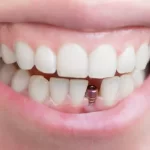Undergoing gender-affirming surgery is a significant milestone for many transgender individuals. Whether it’s top surgery, bottom surgery, or other gender-affirming procedures, recovery is a crucial phase. Here, we outline key aspects of recovery, including physical, emotional, and practical considerations.
Understanding the Types of Surgeries
Top Surgery
Top surgery refers to procedures that alter the chest area. For trans men, this often involves mastectomy and chest reconstruction. For trans women, it might involve breast augmentation.
Bottom Surgery
Bottom surgery includes procedures such as vaginoplasty for trans women and phalloplasty or metoidioplasty for trans men. These surgeries are more complex and typically require a longer recovery period. During the recovery period after vaginoplasty, using a set of dilators as prescribed helps maintain vaginal depth and width, promoting optimal healing and functionality.
Other Gender-Affirming Procedures
Other surgeries might include facial feminization surgery, tracheal shave, or body contouring. Each has its own recovery timeline and care requirements.
Preparing for Surgery
Mental and Emotional Preparation
Surgery can be emotionally taxing. It’s important to have a strong support system and to discuss your feelings and concerns with a therapist or support group.
Physical Preparation
Follow your surgeon’s preoperative instructions carefully. This might include stopping certain medications, quitting smoking, or making dietary adjustments.
Practical Arrangements
Arrange for time off work and help at home. Ensure you have all necessary supplies for post-operative care, such as medications, bandages, and comfortable clothing.
The Immediate Post-Operative Period
Hospital Stay
Depending on the type of surgery, you might need to stay in the hospital for a few days. Follow all instructions from the medical staff, including those related to pain management and mobility.
Managing Pain and Discomfort
Pain and discomfort are common but manageable. Take prescribed pain medications as directed and use other pain relief methods like cold packs or gentle movements to alleviate discomfort.
Monitoring for Complications
Keep an eye out for signs of infection or other complications, such as excessive bleeding, fever, or unusual swelling. Contact your healthcare provider immediately if you notice any concerning symptoms.
The Long-Term Recovery Process
Physical Healing
Physical recovery times vary by surgery type. Top surgery might require several weeks, while bottom surgery could take months. Follow your surgeon’s guidelines for activities like lifting, exercising, and sexual activity.
Dilation and Pelvic Stretchers
For those undergoing vaginoplasty, regular dilation is essential to maintain vaginal depth and width. Use the dilators as prescribed, gradually increasing size and duration. Pelvic stretchers can help ease discomfort and prevent complications.
Emotional and Mental Health
The recovery period can be emotionally challenging. Continue seeing a therapist, join support groups, and stay connected with loved ones. Be patient with yourself and give yourself time to adjust to the changes.
Practical Tips for a Smooth Recovery
Creating a Comfortable Environment
Set up a recovery space at home with easy access to everything you need. Stock up on nutritious food, hydration, and entertainment options to keep you occupied during downtime.
Keeping a Recovery Journal
Documenting your recovery journey can help track your progress and provide valuable information for your healthcare team. Note any physical changes, emotional states, and any questions or concerns that arise.
Gradual Return to Routine
Ease back into your normal routine slowly. Don’t rush the process, and listen to your body. Start with light activities and gradually increase as you feel comfortable.
Conclusion
Recovering from gender-affirming surgery is a significant, multifaceted process. It involves not only physical healing but also emotional and mental adjustments. With proper preparation, support, and self-care, you can navigate this journey successfully. Always follow your healthcare provider’s advice and reach out for help when needed. Celebrate each step of progress and remember that recovery is a unique journey for everyone.




